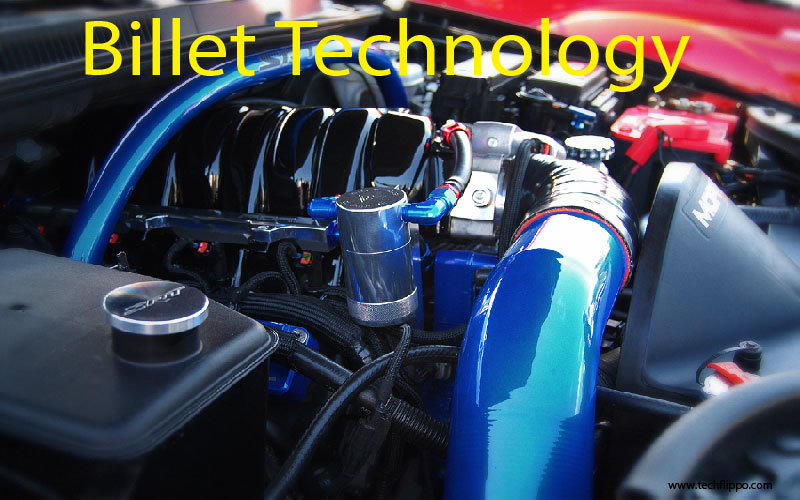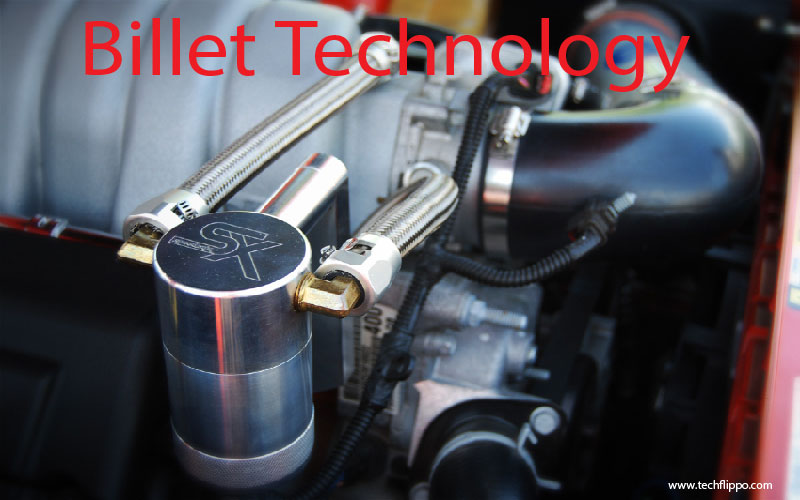The Advantages of Using Billet Technology in Product Design
Billet technology is revolutionizing the way products are designed and manufactured. Gone are the days of traditional methods that often compromise on quality and precision. Instead, this innovative approach allows designers to create exceptional items that stand out in both performance and aesthetics. From automotive parts to high-end consumer goods, billet technology offers a world of possibilities for manufacturers looking to elevate their product offerings. Let’s dive deeper into what makes this method so advantageous in today’s competitive marketplace.

How billet technology differs from traditional manufacturing methods
Billet technology stands apart from traditional manufacturing methods in several key ways.
It employs a solid block of material, often metal, which is machined down to create the final product. This contrasts with processes like casting or forging that begin with molten materials.
The result? A denser and more uniform structure. Billet parts exhibit superior mechanical properties due to the absence of internal voids or inconsistencies found in cast products.
Another significant difference lies in precision. Traditional methods can introduce variations during production, while billet technology allows for tighter tolerances and repeatability.
This precision not only enhances performance but also simplifies assembly procedures. The overall design flexibility provided by billet processing opens up new avenues for innovation that many conventional techniques cannot match.
The advantages of using billet technology in product design:
Billet technology offers a range of benefits that can transform product design. One major advantage is its ability to enhance strength and durability. Products made from billet materials often outperform those crafted through traditional methods, standing up to stress and wear over time.
Precision and consistency are also hallmarks of this manufacturing approach. The machining process allows for intricate designs with tight tolerances, ensuring every piece meets exact specifications.
Customization options abound with billet technology. Designers can create unique shapes and features tailored to specific needs, enabling innovation in various industries.
While the initial investment might be higher than other methods, the long-term cost efficiency becomes evident as these products require less maintenance and have longer lifespans compared to their counterparts. This combination of factors makes billet technology an attractive choice for designers aiming for quality and longevity in their creations.
A. Enhanced strength and durability
Billet technology brings a remarkable edge to product design through its enhanced strength and durability. Unlike components produced from traditional methods, billet parts are crafted from solid blocks of material. This creates a uniform structure that significantly reduces weaknesses.
The manufacturing process involves precision machining, which ensures that every detail is accounted for. As a result, products made with billet technology can withstand extreme conditions without compromising performance.
Moreover, the dense nature of these materials makes them resistant to wear and tear over time. Whether it’s automotive parts or industrial equipment, the longevity offered by billet construction means less frequent replacements and repairs.
This durability translates into dependable usage in demanding applications where failure is not an option. Engineers looking for reliability often turn toward this innovative approach to ensure their designs meet rigorous standards.
B. Precision and consistency in production
Billet technology offers unparalleled precision in manufacturing. By using a solid block of material, it eliminates the inconsistencies typical with subtractive methods.
This process allows for intricate shapes and designs to be crafted with extreme accuracy. Each component produced maintains tight tolerances essential for high-performance applications.
Consistency is another major benefit. Every part made through billet technology adheres to standardized specifications, ensuring that replacement components fit seamlessly without adjustments.
Quality control becomes much simpler as well. The uniformity achieved minimizes variations between batches, leading to reliable performance over time.
Manufacturers can depend on this technique for repeatable outcomes, which fosters trust among customers seeking reliability in their products. This level of precision not only enhances functionality but also elevates overall product quality dramatically.
C. Customization options for unique designs
Billet technology opens the door to unparalleled customization options in product design. With this advanced process, manufacturers can create parts that are tailored specifically to project requirements.
The flexibility inherent in billet machining allows for intricate designs that stand out. Designers have the freedom to experiment with shapes and features, resulting in unique products not achievable through traditional methods.
Moreover, customizing materials is a breeze. Different alloys or finishes can be selected based on specific needs like corrosion resistance or aesthetic appeal.
This level of personalization ensures that each piece not only meets functional criteria but also aligns perfectly with brand identity. As a result, customers receive products that reflect their vision while maintaining high performance standards.
D. Cost efficiency in long-term use
Cost efficiency in long-term use is one of the standout advantages of billet technology. When products are designed and manufactured using this method, they often require fewer repairs or replacements over time due to their inherent strength.
The durability associated with billet components means that businesses can save on maintenance costs. A stronger product withstands wear and tear better than those made from traditional materials.
Additionally, while initial investment might seem higher, the longevity of these items offsets upfront expenses. Over years of service, the savings become apparent as less frequent replacements lead to lower overall costs.
Moreover, reduced waste during production minimizes material expenses. This sustainable approach not only benefits companies financially but also appeals to environmentally conscious consumers seeking efficient solutions in today’s market.

Examples of successful products utilizing billet technology
Billet technology has revolutionized various industries, and its influence can be seen in several standout products.
Take high-performance automotive parts, for example. Components like engine blocks and suspension systems crafted from billet materials often outperform their counterparts made using traditional methods. These products offer enhanced strength while reducing overall weight.
Another notable application is in the aerospace sector. Aircraft components manufactured with billet technology ensure precision and reliability, essential for safety in aviation.
In consumer electronics, premium devices often feature billet aluminum casings that not only look sleek but also provide durability against daily wear and tear.
The medical field benefits as well; surgical instruments designed with billet technology boast superior performance due to their exact specifications and robust construction.
These examples highlight how diverse applications of billet technology continue to push boundaries across multiple sectors.
Potential limitations and challenges of using billet technology
While billet technology offers numerous advantages, it’s not without its limitations. The initial cost of billet materials can be higher than traditional alternatives. This might deter some manufacturers or startups from making the switch.
Additionally, the machining process often requires specialized equipment and skilled labor. Not every facility is equipped to handle these demands, which could lead to longer production times and potential bottlenecks.
Another challenge lies in the waste generated during machining. Although modern processes aim to minimize this, inefficiencies still exist compared to other manufacturing methods that utilize raw materials more effectively.
While customization is a strong point of billet technology, developing unique designs may require extensive testing and prototyping. This adds time and resources into the development phase that could impact overall project timelines.
Future possibilities and advancements in billet
The landscape of product design continues to evolve, and billet technology stands at the forefront of this transformation. As industries seek to enhance performance and sustainability, advancements in billet manufacturing methods promise even greater benefits.
One area of potential growth is automation. The integration of AI and machine learning into the production process could streamline operations further, reducing lead times while maintaining quality. Additionally, innovations in materials science may expand the range of metals suitable for billet processing, allowing for enhanced properties tailored to specific applications.
Sustainability is another key focus. With increasing awareness around eco-friendly practices, future developments may emphasize recyclable materials or energy-efficient processes within billet technology. This could not only appeal to environmentally conscious consumers but also reduce overall production costs.
Furthermore, as designers become more familiar with the capabilities offered by billet technology, we can expect a surge in creative applications across various fields—everything from automotive components to high-performance sporting goods might benefit from these advanced techniques.
As research progresses and new technologies emerge within the realm of billet manufacturing, we are likely on the verge of significant breakthroughs that will redefine how products are designed and produced moving forward.